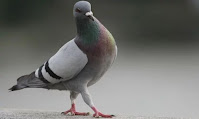February 9, 2021
A special word for Quarantine Blog 316:
“For God so loved the world that He gave His only begotten Son, that whosoever believeth in Him should not perish but have everlasting life” (John 3:16).
👉 Ebbets Field was a Major League Baseball stadium in Brooklyn, New York. It is known mainly for having been the home of the Brooklyn Dodgers from 1913 to 1957, but Ebbets Field also hosted three pro football teams – the New York Brickley Giants, the Brooklyn Lions/Horsemen, and the Brooklyn Dodgers/Tigers. Ebbets Field was demolished in 1960 and replaced by the Ebbets Field Apartments, later renamed the Jackie Robinson Apartments.
Dodgers’ owner Charles Ebbets acquired the property over several years, starting in 1908, by buying lots until he owned the entire block. Newspaper coverage in the spring of 1913 was filled with glowing praise about the new park, calling it “A Monument to the National Game” and predicting it could last 200 years. Its actual lifetime turned out to be less than 50 years.
The first game played was an inter-league exhibition game against the New York Yankees on April 5, 1913, played before an overcapacity of 30,000 fans, with 5,000 more who had arrived but were not able to get in. The first game that counted was played on April 9 against the Philadelphia Phillies, with Brooklyn losing, 1– 0.
 |
| Charles Ebbets’ daughter throws out the first pitch. |
Expanded in 1932 and 1937, Ebbets Field never seated more than 35,000 people, and the constraints of the neighborhood made its further expansion impossible. It had almost no automobile parking.
Walter O’Malley, who obtained majority ownership of the Dodgers in 1950, announced plans for a privately owned domed stadium in Brooklyn. However, New York City Building Commissioner Robert Moses refused to help O’Malley secure the land. O’Malley moved the club to Los Angeles after the 1957 season.
The final Brooklyn Dodgers game at Ebbets Field saw Dodgers defeat the Pittsburgh Pirates, 2-0, on September 24, 1957.
 |
| From the last Dodgers game at Ebbets Field. |
👉 Here are a few more entries from our “Strange, But True Facts Department.”
Until 2015, it was illegal to dance in Japan after midnight. This was a law introduced in 1948 to crack down on dance halls that acted as fronts for illicit activities and it was only revoked in 2015.
In 1997 a cargo ship lost 4.8 million Lego pieces in a storm. The container ship Tokio Express was hauling cargo across stormy seas on February 13, 1997, when a rogue wave crashed over the decks and caused some of her cargo to become loose and wash overboard. The pieces are found on the beaches of Cornwall in the UK, whenever there’s a particularly bad storm.
In England, pigeon poop is property of the Crown because pigeon poop could be used to make gunpowder. Because of this, King George I declared all pigeon poop to be property of the Crown in the 18th Century.
👉 Here are some funnies for the oldsters among us:
👉 The Treasures of the Snow
I’ve been holding this piece, hoping that the day you read it, you would go outside to pick up the paper and find your front lawn covered with snow. I guess for the snow, you are going to have to follow the example of we Pittsburgh Pirates fans and, wait ‘till next year. So, without the white stuff (or a winning season by the Bucs any time soon) read on.
Job is a book of the Bible that we seldom read. Many people ignore what they, incorrectly perceive to a gloomy, out-of-date story. But there is a little verse, tucked away near the end of Job – “Hast thou entered into the treasures of the snow?” (38:22).
No exegesis. Let’s just take this one out of context – a violation of every principle of hermeneutics I was ever taught – and walk rapidly through snow’s treasure house.
In Ireland, we are told, there are a dozen words for “peat.” The Arabs, they say, have many words for “sand.” Allegedly, the Eskimos have scores of words for “snow.”
Freshly fallen snow is an “ice skeleton.” When the “snow pack” (another term) begins to thaw, it is called “corn snow” or “spring snow.” If snow lasts a year on the ground it is called “firn.” In a few centuries the firn will be called a “glacier.”
Fresh snow falls each year on nearly one-fourth of the earth’s dry land surface. In our hemisphere it falls on one square mile out of two. Around the world, one-third of all the water used for irrigation comes from snow. In the western part of the United States, that figure jumps to 75 percent. Farmers can count on snow in winter a lot more than they can count on rain in spring or summer.
Did you know that a two-foot square of snow ten inches deep contains about a million snow-flakes? Nor did I.
Did you know that the formation of snow begins when water vapor forms an ice crystal around one of the thousands of almost microscopic aerosol particles to be found in each cubic centimeter of the lower atmosphere, and when descending snow crystals meet up with one another, they form the aggregations which we call snowflakes? Kind of makes building a snow man a little more significant, don’t you think?
To top it off, all of this activity has a powerful cleansing effect on the atmosphere, dragging untold pollutants out of the air and, potentially, away from our lungs.
Which brings me to one more Bible verse, Isaiah 1:18 – “‘Come now, let us reason together,’ says the Lord. ‘Though your sins are like scarlet, they shall be as white as snow.’” The cleansing of heart pollution can happen only if you come to God through faith in His only begotten Son, Jesus Christ.
-30-








No comments:
Post a Comment